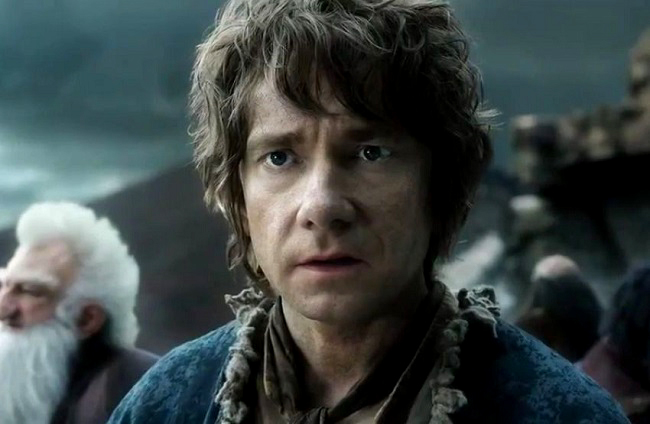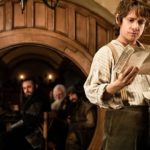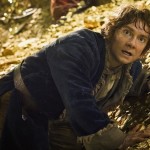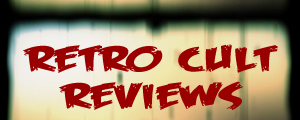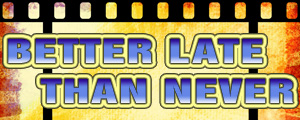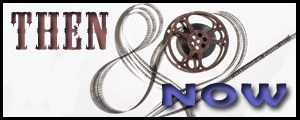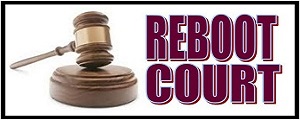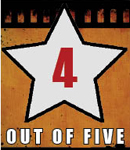
There's a scene near the end of The Hobbit: The Battle of the Five Armies that I absolutely adore. The titular conflict has ended, and Bilbo and Gandalf, exhausted to their bones, plop down next to each other to rest. Then Gandalf does that most Gandalf of things — he pulls out his pipe and begins to pack it. Director Peter Jackson allows the camera to linger a while on the pair, as Gandalf loads up for his smoke. Not a spoken word passes between them, yet it's clear that much is being said just by the silence and sly looks they give each other. They made it. They survived. During their quest, Bilbo had reached down deep and found bravery and fortitude he never knew existed inside of him, though Gandalf suspected they did. Gandalf had ultimately been proven right, and Middle-Earth is now changed because of it.
It's a lyrical and emotional scene, one that would stand proudly beside any similar scene from Jackson's original Lord of the Rings trilogy. But it's just one scene. Things get murkier when you look at this movie and the trilogy it concludes as wholes. What the ultimate legacy of the Hobbit films will be is difficult for me to say. I'm one of the few who thought the first film, An Unexpected Journey, was a near perfect realization of J.R.R. Tolkien's original Middle-Earth tale. It was whimsical and enchanting, with strong character work and a self-contained narrative about the dwarves coming to accept Bilbo as one of their own. I couldn't understand others' complaints about bloat and over-familiarity … at least not until the second movie, The Desolation of Smaug, which actually did suffer from the problems many critics had ascribed to the first movie. I still enjoyed Smaug and would take umbrage with anyone who labeled it — or any of these films — as a Star Wars prequels-level disaster. (They're not even close.) But, for the first time, Jackson did not seem in full command of his craft while playing in Middle-Earth.
The Battle of the Five Armies is a tick better than Smaug, though it re-commits some of the same sins as the previous film. The film is the shortest of the three, clocking in at around two hours and 20 minutes, yet a half-hour could have been shaved off easy without losing anything important. The forbidden love between dwarf Kili and the elf Tauriel feels as shoehorned in and needless as it did the last time. And Legolas still gotta Legolas. Jackson's biggest miscalculation with these films was taking a fan favorite who worked in small doses in the original trilogy — one who doesn't even appear in The Hobbit book — and jamming him into the action here while cranking him up to 11. Remember when Legolas brought down the giant elephant creature by himself in The Return of the King? That was cool. That felt earned. But seeing him stab an ogre in the head and "drive" it around a battlefield in Five Armies is overkill, a desperate callback to adventures past and a distraction from the story Jackson should be focusing on. The movie also has a strange fascination with Alfrid, the Master of Laketown's cowardly man-servant. Over and over again, he's used for dodgy comic relief as the story drags him alongside the main characters for no good reason.
And yet, if you can put up with all of that stuff, there's so much here worth seeing. Concurrent to the story Tolkien laid out in his The Hobbit, Jackson has been telling a side-story about the rebirth of Sauron, That's wrapped up early in this film courtesy of a badass wizard battle where Gandalf, Elrond, Saruman and Galadriel throw down against the Nazgul at Dol Guldur. There's reason to worry that it would end up looking like old men swinging sticks around at bad CGI, but Jackson stages a scene that's powerful and exciting. (Also, Cate Blanchett gets to go full "Dark Galadriel" again, which is always fun.) It was also smart of Jackson and his co-screenwriters (Fran Walsh, Philippa Boyens and a still-credited Guillermo del Toro) to get this prequel business out of the way early and then move on to the Hobbit's primary story.
As anyone who's read the book knows, that involves what occurs after the Company of Thorin Oakenshield has recaptured the Lonely Mountain. The movie opens with Smaug raining fire down upon Lake-town. The creature is felled by Bard the Bowman (in another well-constructed action sequence), though the city has been almost entirely been turned to ash floating on the water. With the Master dead, Bard takes charge and leads his people to the Mountain, looking for shelter and their portion of the treasure promised by the Dwarves. However, Thorin (Richard Armitage) is succumbing to "dragon sickness." The mounds of gold he now rules over have clouded his mind, and his search for the still-missing Arkenstone — the greatest of Dwarven treasures — has him turning on his own party. Thorin refuses to help the people of Lake-town and barricades his crew inside the Mountain. He then openly defies the Elven army once Thranduil (Lee Pace) shows up to collect some of his people's treasures that are also contained within the fortress. To make matters worse, Dwarven back-up is on the way while two different orc armies, one led by Azog (the one missing an arm) and the other led by Bolg (the one with the metal head plate), approach from opposite directions. It's a giant Mexican stand-off, Middle Earth-style, and Gandalf (Ian McKellen) and Bilbo (Martin Freeman) just want everyone to come to their senses before everybody ends up dead.
Once sides are taken and the war starts, Jackson keeps the action propulsive and fun to watch, using inventive sequences both small (an ogre with a stone affixed to his head being used as a battering ram) and large (Thorin's showdown with Azog atop an icy cliff), Despite the huge number of warriors on screen, Jackson mostly sticks with the characters we've followed through three films, as we watch them weave their way in and out of battle. Everything that worked with the first two movies is appropriately paid off here, from Thorin and Bilbo's friendship to Thranduil's distaste for anything than doesn't serve his own purposes. (Pace is so great here. I love his smug, douchey Elven king.) After being somewhat brushed to the side in the second film, Bilbo himself is moved back into more of a central, pro-active position, which allows Freeman to do his usual standout work and results in Five Armies being a more focused movie than Smaug.
And yet it also feels more clinical than you'd imagine Jackson intended. Watching The Return of the King never fails to make me a weepy mess, but I didn't shed a tear during Five Armies. Some of that has to do with its epilogue-like structure. (After all, the Dwarves essentially reach the end of their quest in the last movie.) But it's also fair to say these characters don't resonate as well as their Lord of the Rings counterparts. Although maybe The Hobbit was never meant to carry the same emotional weight of The Lord of the Rings. Maybe we only assume that it was because Jackson took a 200-some page novel and stretched it to an epic trilogy, designed specifically to remind us of what had come before. That was a mistake, though one that's only consequence is a film series that is merely good when its predecessor was so much more.

